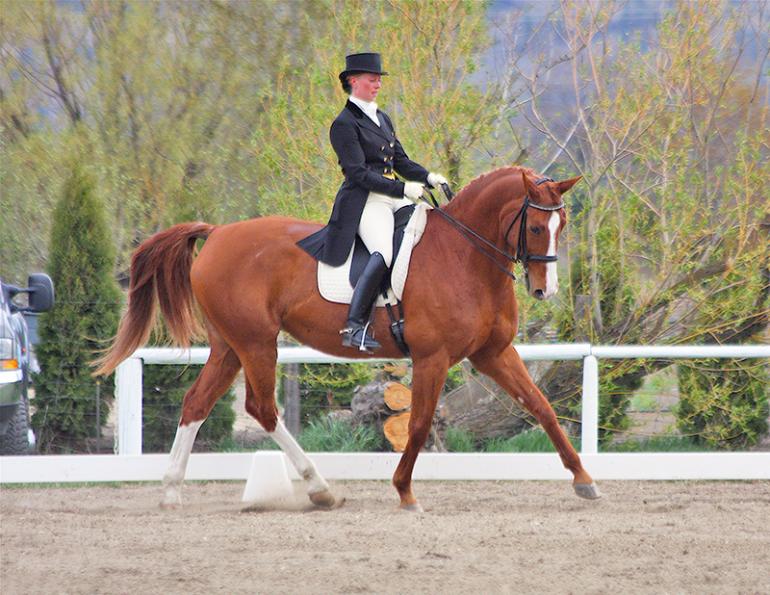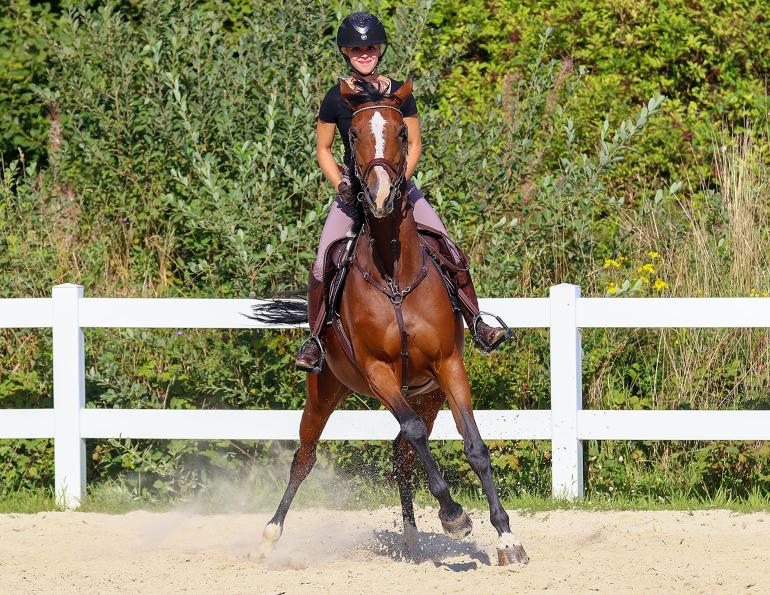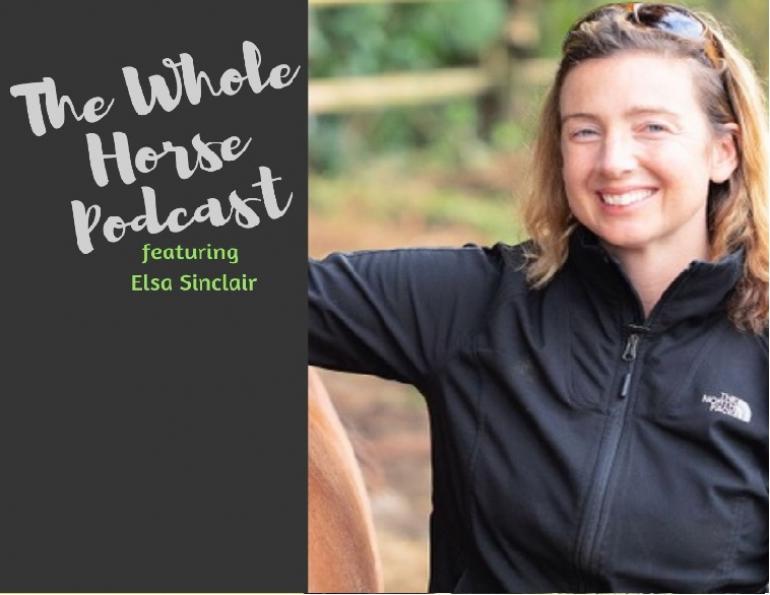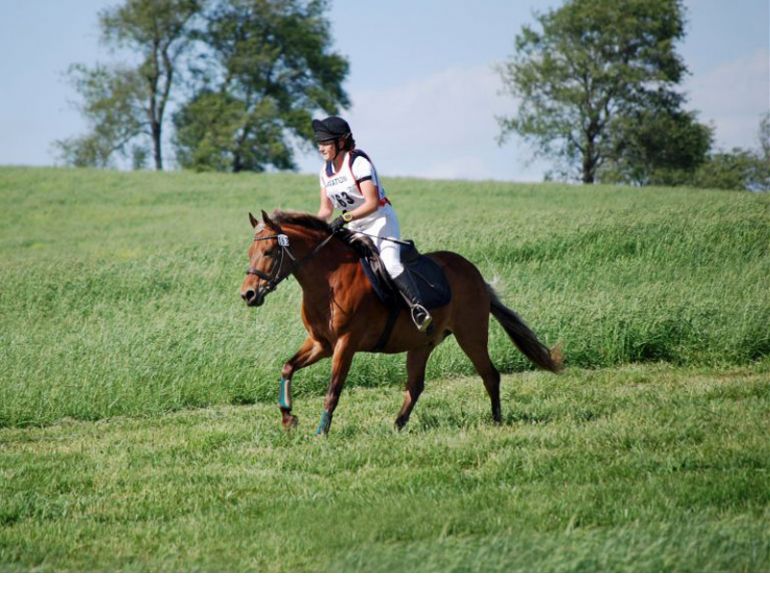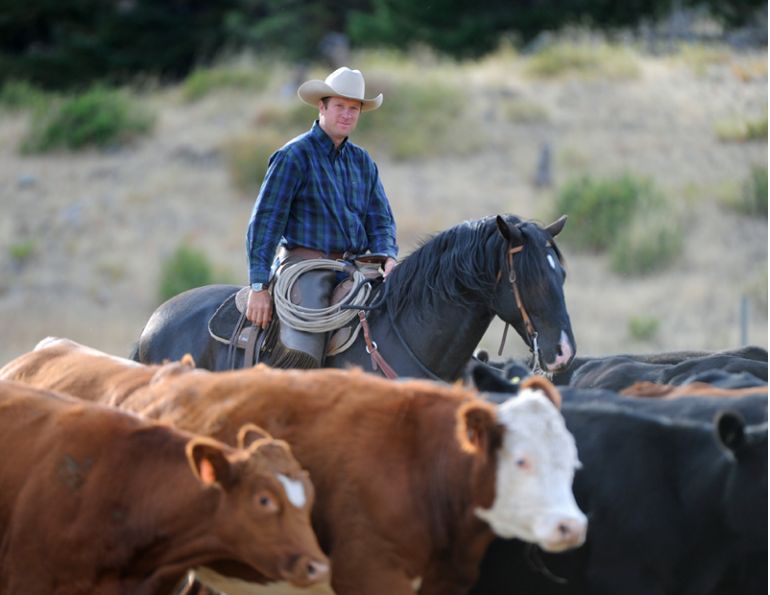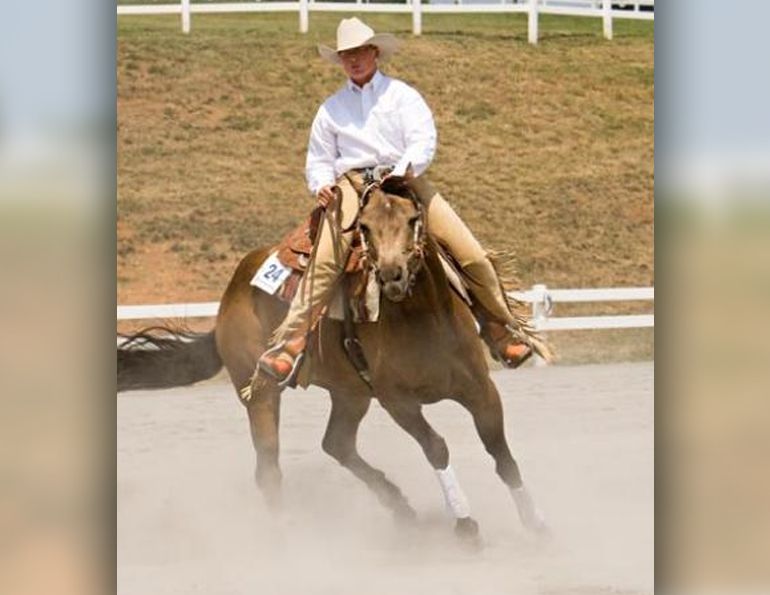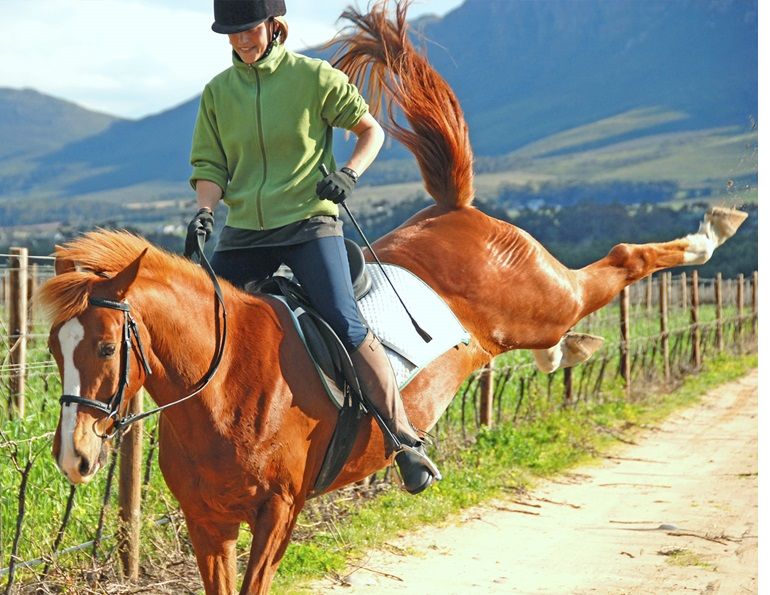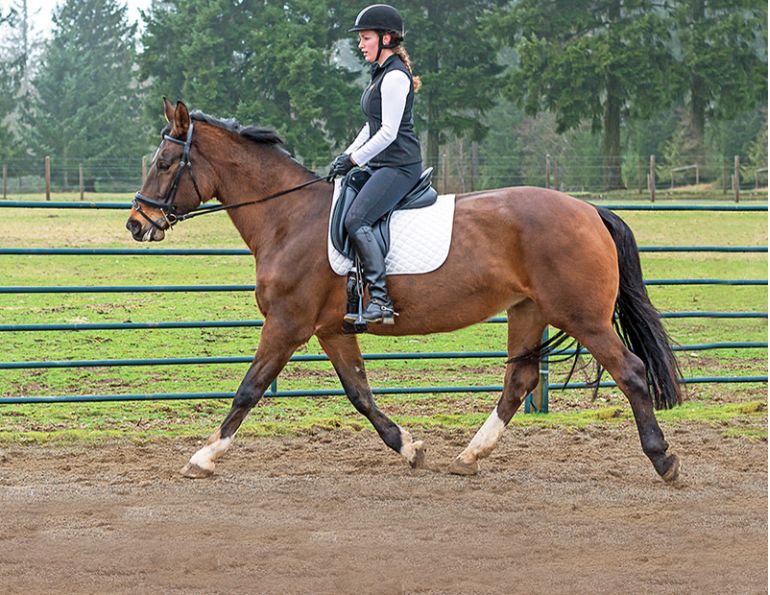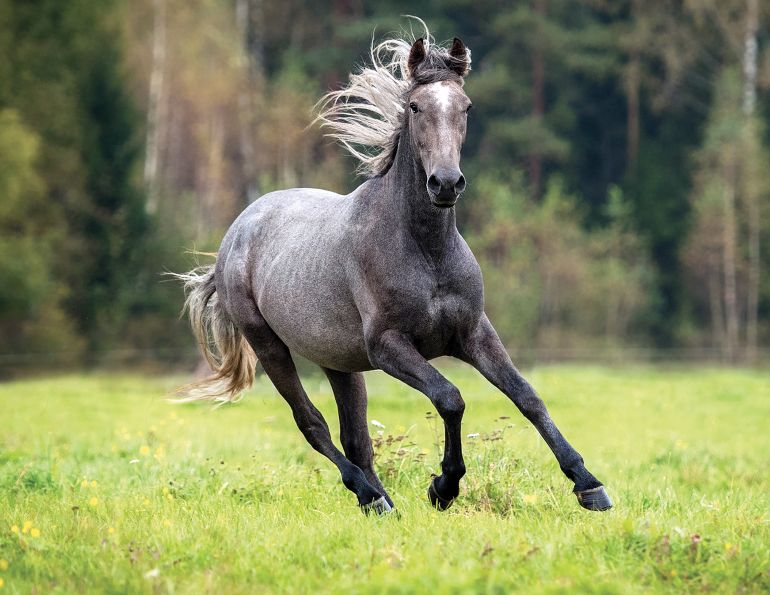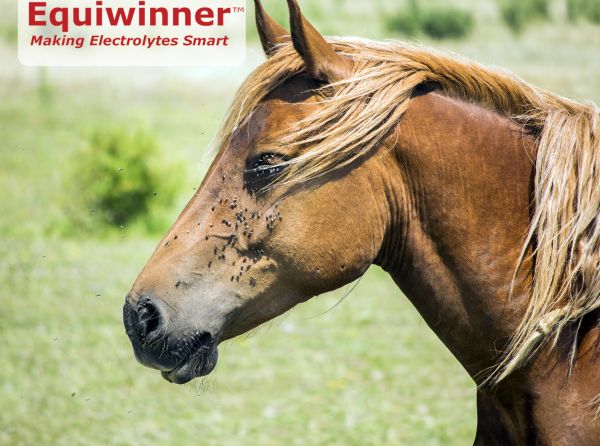By Sandra Verda-Zanatta, Owner/Founder of Fit To Ride
Struggling with the sitting trot? You're not alone! No matter your age, level of expertise, or the discipline you ride, it is a challenging skill to perfect. Achieving a smooth, effective sitting trot requires a balanced, independent seat that moves in harmony with your horse—without restricting their natural motion.
To ride with ease and efficiency, you need:
- Flexibility & Suppleness – in your hips, legs, and lower back (lumbar spine)
- Pelvic Stability – to absorb motion without bouncing
- Core Strength – to maintain an upright, engaged posture
Since riding is a dynamic activity, your body must stay firm yet fluid—never stiff. The key is developing the right combination of strength, stability, and mobility.
Ready to improve your sitting trot? Here are some simple yet effective exercises to help you and your horse move together in perfect rhythm!
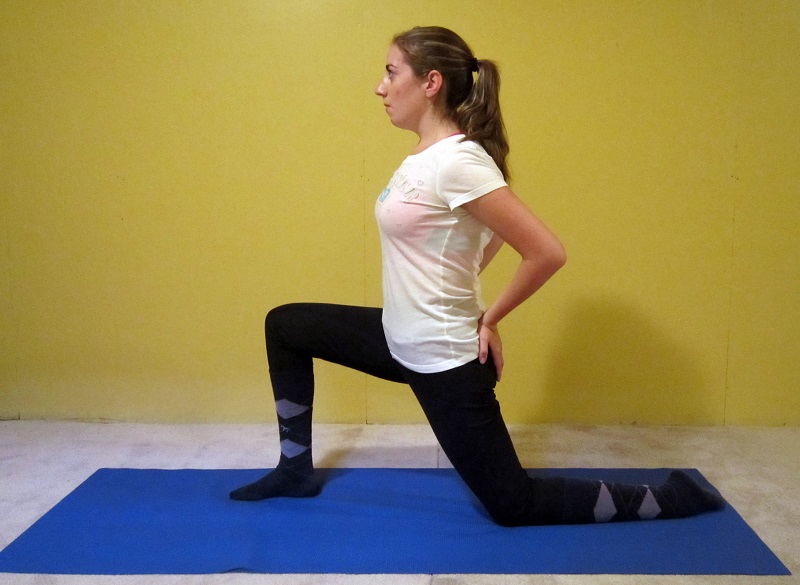
Hip Flexor/Quadriceps Stretch
Hip Flexor/Quadriceps Stretch
With your left knee on floor and your right leg forward, adopt a lunge position. Keep more weight on your left knee and press down into the floor, at the same time pressing your left hip forward, stretching through your hip flexors and quadriceps. Hold for 30 seconds and relax. Switch legs and try the same stretch on the other side. Repeat three to five times on each side.
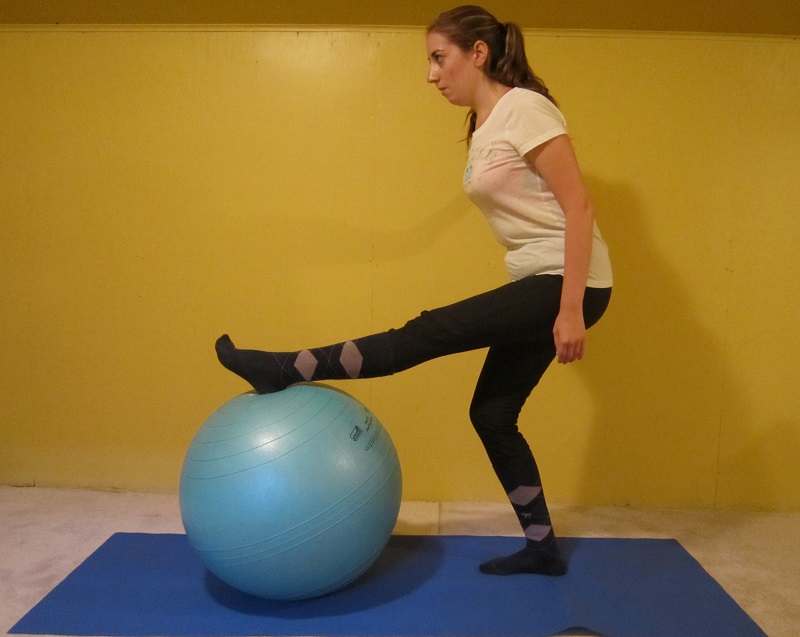
Hamstring Stretch
Hamstring Stretch
Put your left foot up on a raised surface such as a chair, stairs, exercise ball, etc. Flex your foot, bend your right leg at the knee, and press into the hamstring of your extended left leg while closing your hip angle. You back should remain flat. Hold for 30 seconds and relax, then stretch your right hamstring.

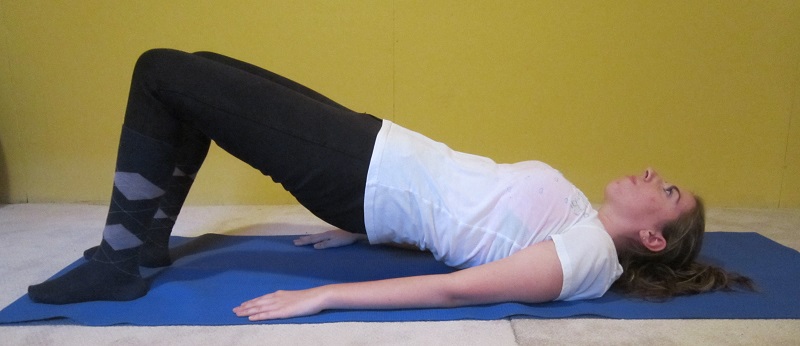
Hip Roll for Spine Mobility
Hip Roll for Spine Mobility
Lie flat on your back with your knees bent and heels in line with your seat bones. Draw your belly button in toward your spine and tilt your pelvis posterior. Then, exhale and, starting with your tailbone and lower back, peel yourself slowly off the floor one vertebra at a time until your upper legs and back form a long, flat line. Hold this position, inhale, and then as you exhale, slowly roll yourself back down, starting with your upper back and ribs, keeping your tailbone up as long as possible. Stretch through your lower back (lumbar spine) and relax. Repeat 10 times.
CORE STRENGTHENING EXERCISES:
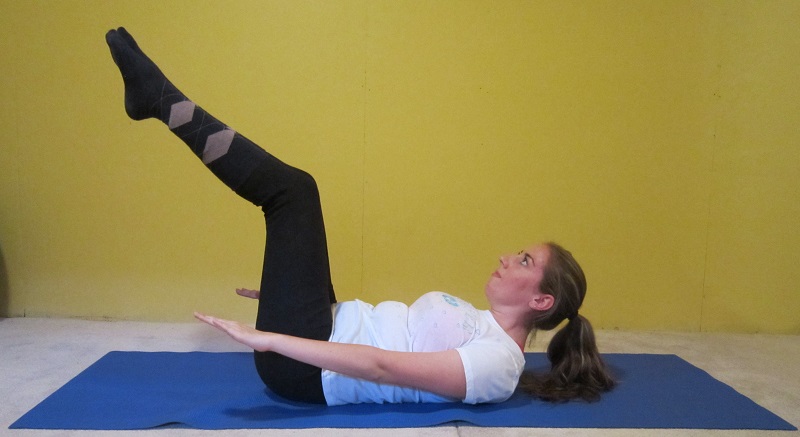
Abdominal Mini Crunch
Abdominal Mini Crunch
Lie on your back, feet off floor, with your knees bent at an angle of 90 degrees or slightly more. Keeping your pelvis in a neutral and flat position, raise your head slightly off the floor with your gaze toward your knees. Lift your arms one to two inches off the floor, reaching them towards your heels. Then, keeping your shoulder blades flat on your back (avoid hunching them forward), exhale as you curl up, lifting your upper body off the floor slightly. Remember to breathe as you hold the position for 10 seconds (five inhalations/exhalations), then lower yourself back down and relax. Repeat 10 times.
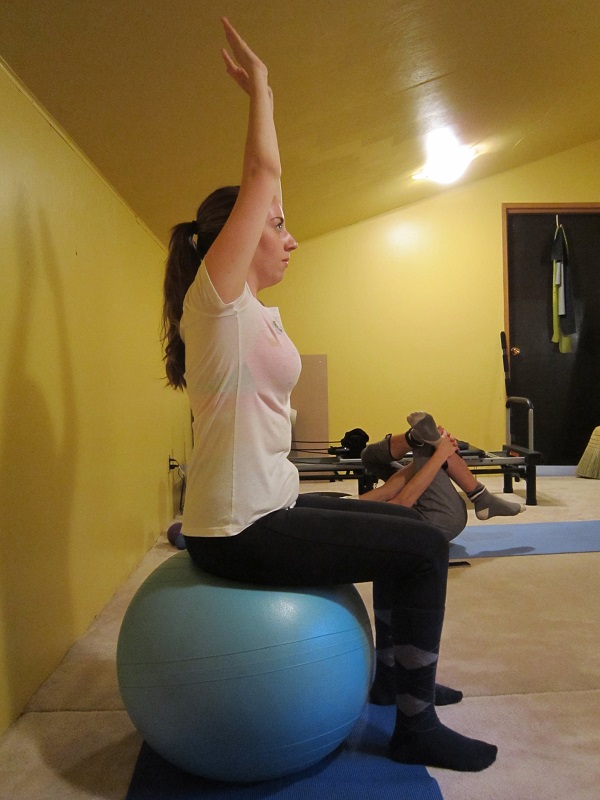
Ball Bounces: Correct

Ball Bounces: Incorrect
Ball Bounces
Sitting on an exercise ball, draw your belly button inward toward your spine. Feel a connection in your torso as you keep your shoulder blades flat on your back and stay open in front with your chest, all the while maintaining a connection in your core to avoid arching your back and becoming extended (popping your chest out).
Sit tall with your hands crossed over your chest and gently bounce on the ball. As you gradually increase the height and speed of the bounce, concentrate on keeping your core connection and growing tall through the top of your head. As you progress, try moving your hands to your hips, holding your hands in riding position, out to the side, and then above your head. The goal is to maintain the same upper body position and avoid collapsing in your torso while you bounce and move your arms into different positions. Start by bouncing for one to two minutes and gradually increase the duration.
This exercise is good for improving coordination, core strength, isolating body parts, and general body awareness.
Related: Rider Posture - What is Actually Involved?
MOUNTED EXERCISES
First, there are a couple of important things to consider in preparation for sitting trot:
- Your horse needs to be round and “on the bit” with a relaxed back. If the horse’s back is hollow, the result will be a jarring, choppy feeling that is uncomfortable and can increase tension in both you and your horse.
- The tempo (speed of the rhythm) must be easy for the rider to sit and relax to. For this purpose, it may be better to begin with a slightly slower trot. You can always ride more forward as you become increasingly comfortable and establish your seat and balance.
- Sit in the centre of the saddle and line your belly button up with the horse’s withers. Sit equally on both seat bones, take your legs off saddle, and then let them drop down lightly onto horse’s sides. Think of your legs being long and hanging towards the ground as if you have weights on your ankles. You can actually wear ankle weights to get a sense of this feeling (usually best done on the lunge line). Ankle weights give input to your legs, drawing them down towards the ground, and can be especially helpful for riders who tend to get tight in the hip flexors and draw their knees and heels up when sitting or applying leg aids.
The following exercises can be practiced both on the lunge line and independently.
Interval Training
This is a great exercise for introducing the sitting trot to riders and to young or green horses, as it gradually builds strength and promotes fluidity and harmony.
Starting in rising trot, establish a steady rhythm and round outline. Sit for two beats and rise again for a few strides, then repeat. The goal is that you maintain the same tempo with no disruption while you do a smooth transition from rising to sitting and vice versa. Practice this exercise and when sitting for two beats becomes easy and fluid, try sitting for three beats, then four beats, and so on. Eventually you’ll find yourself being able to sit the trot for longer durations while maintaining position, balance, and relaxation. Whenever you feel tension, begin to bounce, or start to rely on your hands for balance, it is important that you return to rising trot, reorganize, and then start again so that you develop good habits and create correct muscle memory for both the horse and yourself.
Open the Hip Angle
Another useful exercise that will help you develop a deep, following seat is to begin in sitting trot and take your upper body back behind the vertical to allow your hip angle to open. This will allow you to really feel the horse’s movement through your hips. Try this for several strides and then gradually straighten your upper body to a vertical position, maintaining the same deep seat and keeping the feeling of movement through your hips with your legs long and relaxed. Repeat several times, giving your horse walk or rising trot breaks in between.
Posting Trot without Stirrups
If you are having trouble relaxing through your hips and following the horse’s movement in the sitting trot, try posting trot without stirrups for an extended period of time until you feel fatigued, then sit the trot. When you fatigue the muscles in your hips, legs, and inner thigh, you are less likely to tense and grip with them when you sit.
I hope you find these stretches and exercises helpful in developing a harmonious sitting trot with your equine partner!
For more information about how to improve your sitting trot and develop an independent, balanced seat please contact Sandra at fit2ride@shaw.ca or visit her website at www.fit2ride.ca.
Related: How to Fall off a Horse
Related: Building a Rider Fitness Program
Main Photo: Improving your flexibility and strength will help you develop the balanced, independent seat that makes sitting trot a breeze!
All photos courtesy of Photo: Sandra Verda-Zanatta.



